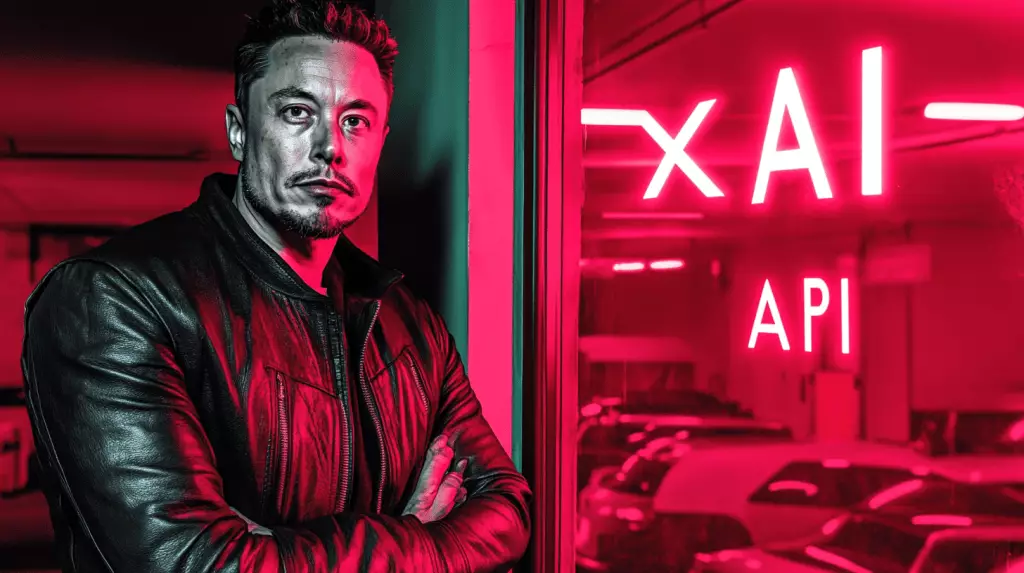In a landscape dominated by rapid technological advancements, Elon Musk’s initiatives continue to turn heads. Most recently, Musk has intensified his focus on artificial intelligence through xAI, his startup aimed at developing advanced AI technologies. Interestingly, while his political activities and rocket launches capture significant media attention, the launch of the xAI API signifies a strategic movement in the tech arena that might alter the competitive dynamics among major firms. This article delves into the intricacies of the xAI API, shedding light on its unique features, competitive positioning, and potential implications for developers and the AI industry as a whole.
On October 21, Musk took to his social media platform, X, to announce the availability of the xAI API. The message was simple but replete with potential: “The @xAI API is now live!” This announcement indicated a significant step for xAI, aiming to provide third-party developers with access to its innovative Grok large language models. The API facilitates integration into various applications, pushing developers to harness sophisticated AI capabilities.
According to the documentation provided by xAI, the API offers two main versions of its language models: Grok-2 and Grok-2 Mini, alongside image generation capabilities through the collaboration with Black Forest Labs’ Flux.1 diffusion model. However, early users found some discrepancies, as one of them only had access to “Grok-beta.” As is typical with many tech launches, the API is marked as a public beta, indicating that further additions and bug fixes are anticipated as developers begin to explore its functionalities.
The introduction of the xAI API positions Musk’s venture against titans like OpenAI, which he co-founded and subsequently departed. By offering a comparable API, xAI aims to attract developers looking for viable alternatives. Nevertheless, the API’s pricing structure raises eyebrows, as many early testers noted that it is not necessarily more cost-effective than existing options. For instance, while OpenAI’s GPT-4o currently costs $2.50 per million input tokens compared to Grok’s $5, such disparities could influence developers’ decisions as they weigh the benefits of switching or diversifying their AI toolsets.
The xAI API aims not just to complement existing systems but also to provide comprehensive support for various functionalities like text generation, code creation, and data extraction. Additionally, the ability to analyze and generate visual content expands its appeal, signaling that xAI is not just a text-based AI but is diversifying into multimedia applications.
The architecture of the xAI API includes features that enhance usability, a crucial aspect for any developer-facing product. A notable addition is the Usage Explorer, which offers real-time tracking of API consumption, allowing developers to manage their resource usage effectively. Furthermore, team management capabilities are simplified, enabling small businesses to bind their email domains, thereby streamlining user management.
While usability is paramount, security remains a pressing concern in today’s digital landscape. xAI addresses this by allowing users to monitor active sessions and log out of unrecognized devices. Additionally, enhanced security measures, such as two-factor authentication and notifications for new IP address logins, ensure that developers can operate within a secure environment. These features may play a pivotal role in building trust and encouraging adoption among developers who are cautious about integrating new technologies.
As the xAI API enters its public beta phase, the larger question is whether developers will embrace it alongside established solutions offered by competitors such as OpenAI, Anthropic, Google, and Microsoft. Musk’s venture presents a promising yet challenging landscape for developers who must navigate between cost, functionality, and brand loyalty.
For organizations looking to diversify their AI toolkit, the introduction of the xAI API offers an exciting opportunity to explore its capabilities. However, early adopters may also face teething issues typically associated with beta software, prompting caution as they consider integration into critical systems.
While Elon Musk’s xAI API presents a strong contender in the burgeoning AI ecosystem, its long-term viability will hinge on further developments, operational reliability, and the ability to closely meet the needs of the ever-evolving tech community. As developers begin to explore this new tool, the competitive dynamics within the AI industry will undoubtedly shift, propelling the quest for superior functionalities and pricing strategies. Ultimately, only time will reveal if xAI can carve a significant niche in the AI landscape Musk aims to dominate.


Leave a Reply